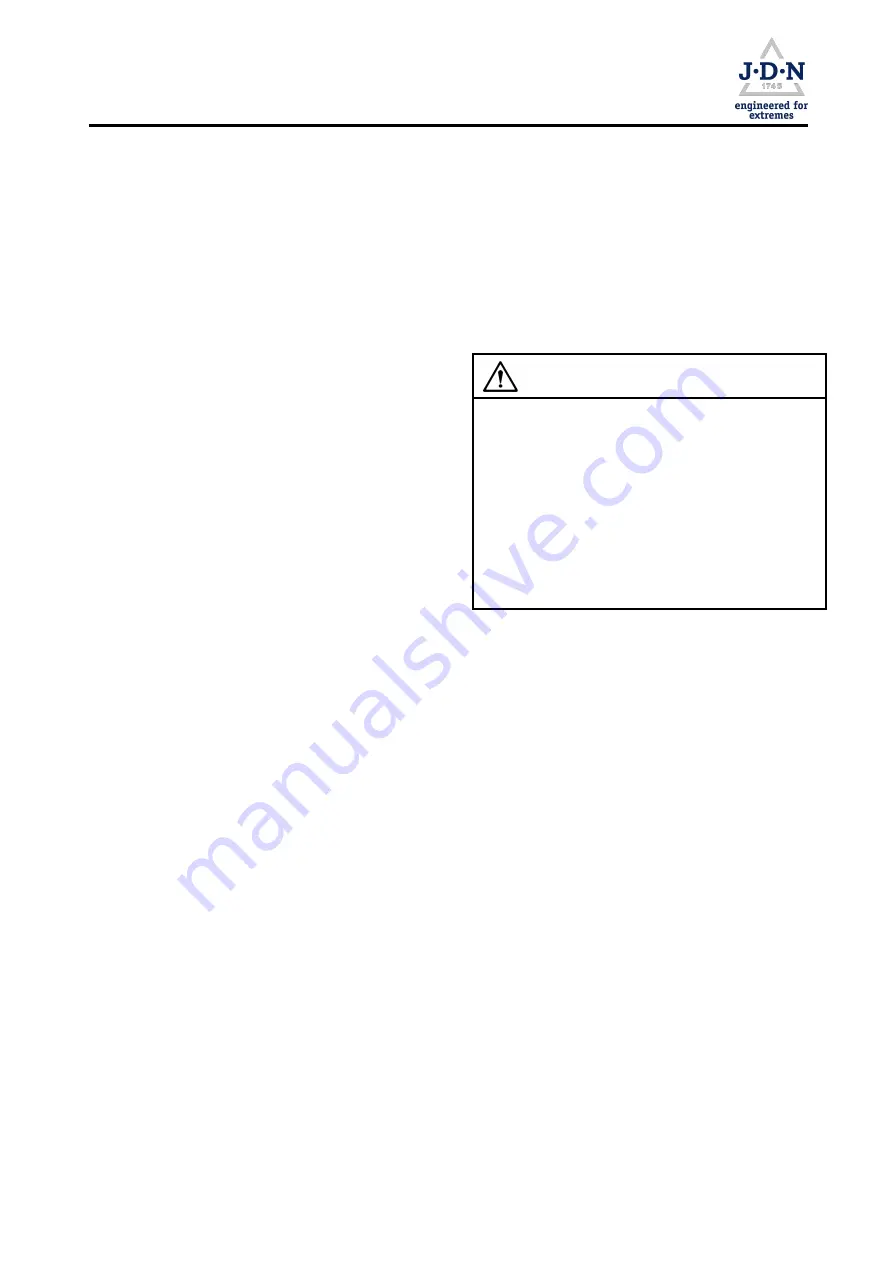
P
RODUCT INFORMATION
3.6. Emissions
3.6.1. Noise emissions
When lifting the nominal load, the sound pressure
level is 78 dB(A). When lowering the nominal load,
the sound pressure level is 80 dB(A).
The decrease of the sound pressure level in the
hall is about 3 dB(A) per distance doubling.
3.6.2. Oil emissions
When operating with oil lubrication of the motor,
small amounts of lubricating oil are discharged into
the environment with the exhaust air.
3.7. Conditions of use
Your product
PROFI 3 TI
is very sturdy and re-
quires very little maintenance. It is suitable for ap-
plications in explosive areas as well as in areas
with increased concentrations of soot, dust, hu-
midity and ambient temperatures from to , if it is
not heated up further due to external influences.
The thermal resistance of the chain and hook is
150
◦
C (302
◦
F).
For stationary use outdoors, you must protect your
product against the effects of weather and shorten
the maintenance intervals.
Stopping and securing against the wind is required
upon reaching a critical wind surge pressure. The
critical wind surge pressure depends, among other
things, on the mass and shape of the load to be
lifted.
3.8. Power requirement
3.8.1. Connections
The connection for the compressed air supply has
the size G 3/4.
Please use the corresponding hose lines for the
selected pressure.
3.8.2. Pressure
WARNING
Danger of explosion
Operating at higher system pressures may result
in hazards due to overload.
When operating at lower system pressures, the
brake can grind and is therefore subject to very
high wear. Inadmissibly high heating may result.
The load capacity of the device is reduced. The
response of the control system decreases notice-
ably.
I
Comply with the specified pressure.
Your product
PROFI 3 TI
must be operated with a
nominal pressure of 6bar (85psi) (see specification
on the nameplate).
Air pressure conditions during operation (
,
→
Figure 9)
The system pressure existing in the line must cor-
respond to the nominal pressure. Higher pres-
sures must be reduced.
After switching on, the adjoining nominal pressure
p1 reduces to the actual pressure p2. The extent
of the actual pressure p2 at which the product is
operated is dependent on
•
the weight of the load
(2)
and the
•
direction of movement of the load
(3)
.
When lifting the nominal load (load capacity) at the
specified lifting speed, the actual pressure p2 may
at a maximum be 10% below the specified nomi-
nal pressure of the hoist (measured immediately
before the lifting motor)!
Page
18
of 60
Doc.-No.: VA053957-40-OM-EN-0720-60-2





































